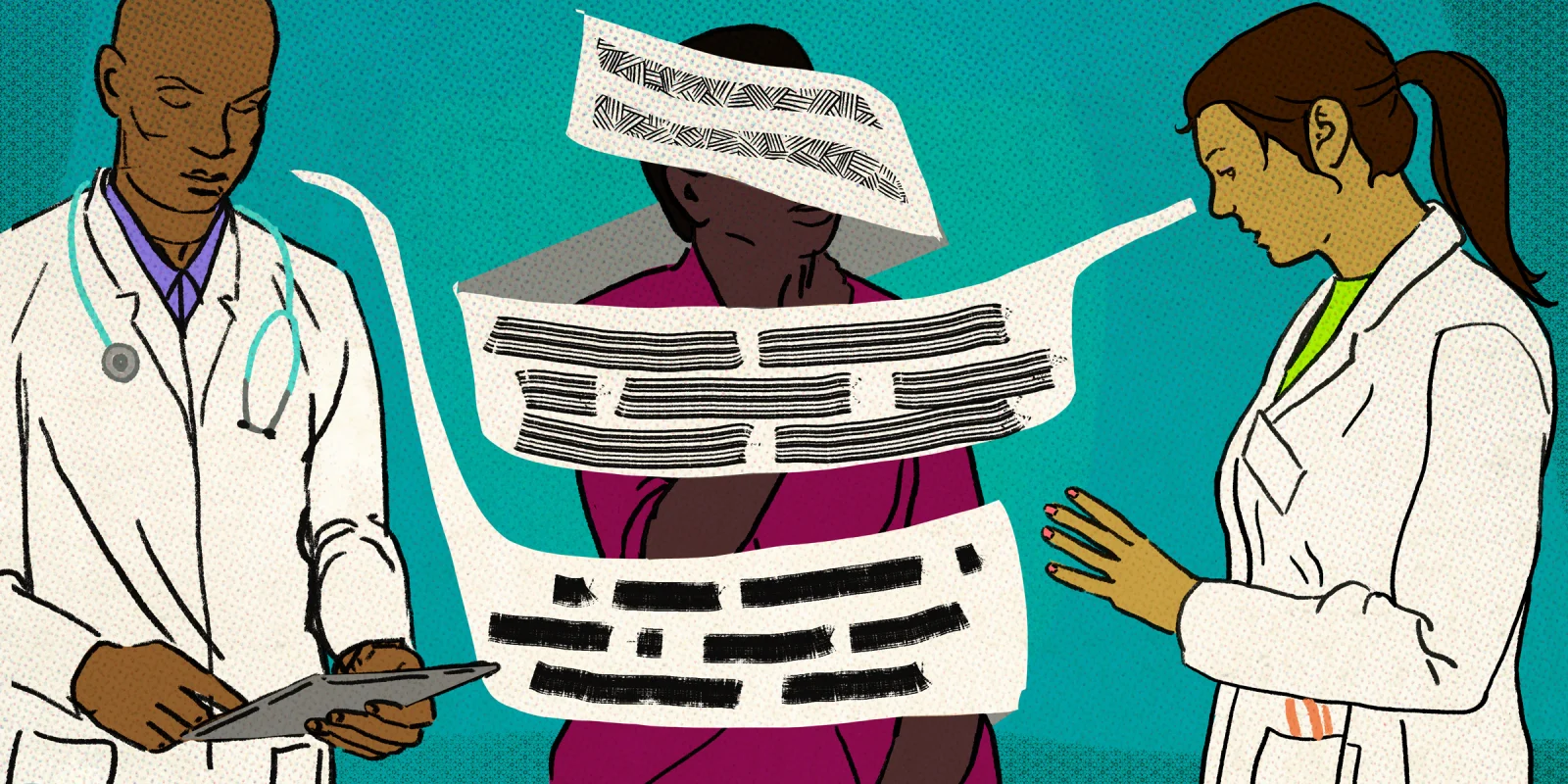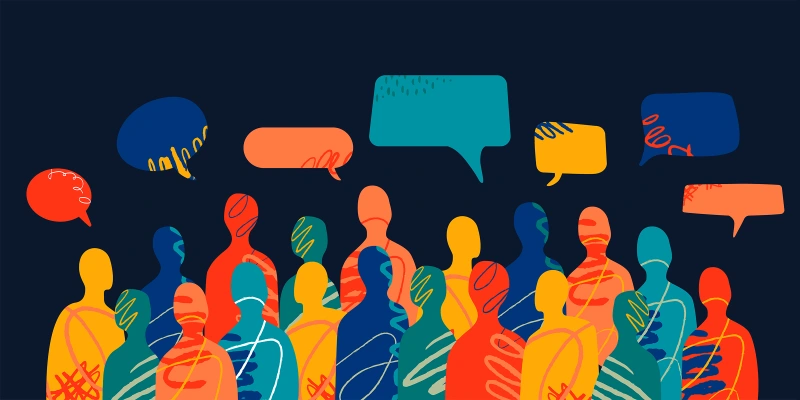Note: This piece was written before the WHO recommended using mpox for Monkeypox.
Obtaining a good History of Present Illness (HPI) is arguably the most fundamental aspect of delivering quality patient care. Clinicians can obtain a good HPI through a thoughtful combination of open-ended and focused questioning, which provides patients with an opportunity to take control of their own narratives. After a sufficient aggregation of historical data has been collected from the patient, it is then up to the clinician to select relevant details for the HPI. What I have found most remarkable about this process is the interplay between how we clinicians see patients (the technical language we use in medical documentation) and how patients see themselves. Oftentimes, so-called clinical or medical language belies discrimination.
Throughout my third year clerkships as I perfected and re-perfected my HPIs, I noticed a recurring theme in clinical practice and board review question banks. Certain characteristics and illnesses were routinely associated with specific patient populations — particularly populations that are in some way marginalized or vulnerable, such as people of color or LGBTQ people. These generalized associations then triggered an almost robotic, and often stereotypical, response or diagnosis. Though it is important to recognize that certain patient populations are at an increased risk for specific conditions, the way this manifests in real life can be painfully reductive.
For example:
“27-year-old African American female presents to the ED with a chief complaint of chronic pain.”
Before the patient’s full story is even digested, differentials start flowing and stereotypes are inadvertently introduced to the patient’s care:
“Does the patient have a history of sickle cell?” “Is this her first ED visit with complaints of pain?” “Is she drug-seeking?”
This hasty method of diagnosis erases each patient’s idiosyncratic human narrative and reduces patient care to diseases and symptoms — effectively dehumanizing the patients we sought to serve.
Similarly, when presented with a gender-nonconforming patient in the clinic or a board review question stem describing “men who have sex with men” (MSM), talk of STIs and risky sexual behavior immediately crops up. In practice questions, the mere mention of MSM is supposed to trigger students to think about rare pathogens such as entamoeba histolytica, or diseases such as HIV. While it is not inherently problematic to associate patients with their medical risk factors, the potential room for stigma that emerges from linking entire patient populations to infectious diseases is a frequently overlooked public health concern.
In addition, presenting medical information in a way that suggests a fixed or biological characteristic, especially in already vulnerable and marginalized patient populations, can influence the way patients interact with the medical system. As a future psychiatrist, I worry about the potentially traumatizing effects this process can have on patients, especially those who already utilize health care services less frequently than the general population. Beyond causing pain, this rote process of assessing patients can also lead to "cookbook" medicine, which increases the risk of missing crucial elements of a patient’s history or misdiagnosing a patient altogether.
As a Black woman in medicine, I have become increasingly attuned to the problems of generalization, and the discrimination that can follow. Recently, I have been reflecting on the public health response to the Monkeypox virus, which has been inaccurately referred to as a “gay male STI.” Though it’s true that a significant portion of Monkeypox cases have been observed within the MSM population, it is not only MSM who are susceptible, nor is the virus sexually transmitted. Such stigmatizing language can have serious consequences: Per a United Nations statement, this language can “drive people away from health services, impede efforts to identify cases, and encourage ineffective, punitive measures.”
Furthermore, the characterization of Monkeypox can re-open old wounds associated with the AIDS crisis. Similar to how Monkeypox was initially presented across the nation, HIV was originally conceived of as a “gay disease” — one that perhaps “punished sinners” who engaged in “risky sexual behavior.” The first cases of HIV were termed “Gay-Related Immune Deficiency,” and the CDC infamously reported the “4-H club” of risk factors for HIV: “Homosexuals, Haitians, heroin users, and hemophiliacs.” Due to this characterization, hundreds of gay men and Black and brown LGBTQ individuals in the U.S. died before public health precautions were taken seriously. Fast-forward to 2022 and we are still witnessing disproportionate mortality rates among sexual minorities, especially Black and brown individuals.
The slow rollout of public health resources and the scarce supply of vaccines at the start of the Monkeypox emergency serve as another parallel to the HIV/AIDS epidemic, something about which many MSM have expressed their pain and disappointment. In the case of both conditions, robust concern emerged after the public realized that everyone was susceptible to contracting the illness, regardless of sexual orientation or gender. This pattern raises the question of morality in medical treatment: Who is deemed worthy of our attention and care? Moreover, who is the arbiter? These unspoken questions pour salt on the decades of unhealed wounds within LGBTQ and POC communities.
The lesson of the Monkeypox virus is clear: The legacy of homophobic AIDS discourse is still fresh and painful in the minds of many. Therefore, in order to mitigate the harmful consequences of illnesses that are more prevalent in specific groups, we need to focus on eliminating stigma. We can start this process by spreading awareness and addressing the gaps in our own knowledge through staying up to date on the literature and becoming aware of our implicit biases.
On a more positive note, the Monkeypox virus has also highlighted the importance of patient advocacy and created an opportunity to discuss the language we use when referring to vulnerable patient populations. As clinicians, one way to do this is to reflect on how we formulate our HPIs and make sure we are using neutral, person-centered language. By routinely considering how our documentation, presentations, and wider medical outreach impact patients, we can help prevent the harmful cycle of medical discrimination and ensure history doesn’t repeat itself yet again.
How do you avoid generalizations in your HPIs? Share your strategies in the comments below.
Abiba Salahou is a fourth-year medical student at Oakland University William Beaumont School of Medicine and member of the national Gold Humanism Honor Society. Abiba plans to serve diverse communities as a child and adolescent psychiatrist, and is passionate about restorative social justice, de-stigmatizing mental illness, creative writing, and food blogging. She tweets at @AbibaSalahouMed. Abiba is a 2022–2023 Doximity Op-Med Fellow.
Illustration by Jennifer Bogartz







